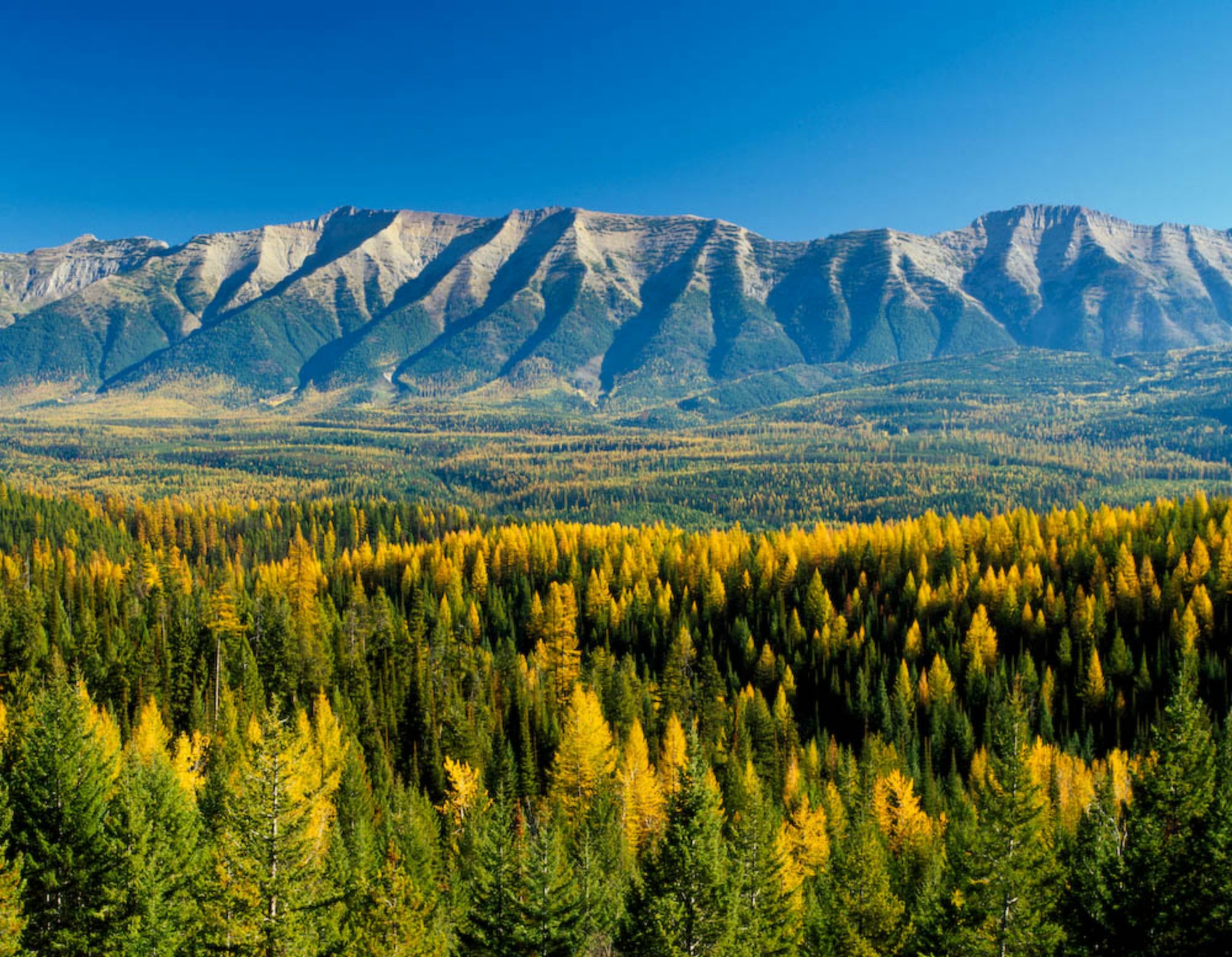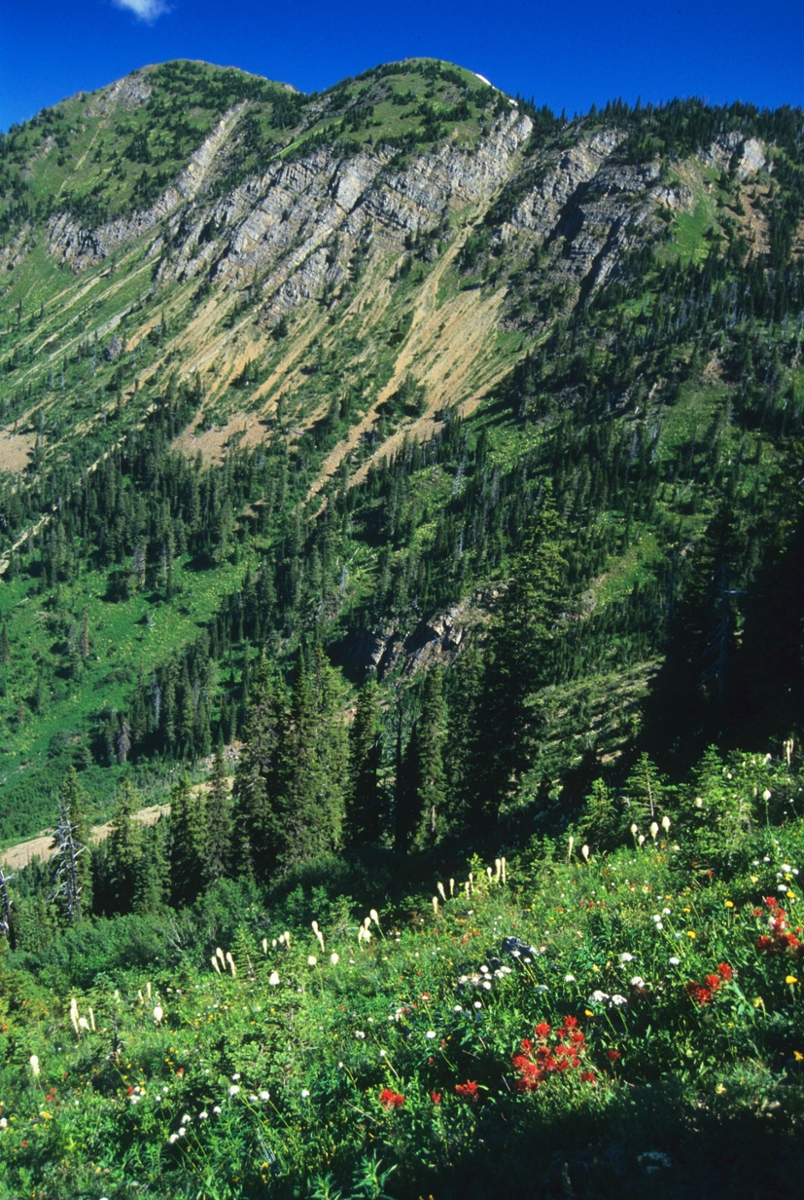Swan Mountains a Gateway to Montana Adventure (Part 1 of 2)
 Larch trees fade to yellow as fall approaches under the Swan Range near Condon, Montana. Photo by John Lambing. (Rick & Suzie Graetz photo)
Larch trees fade to yellow as fall approaches under the Swan Range near Condon, Montana. Photo by John Lambing. (Rick & Suzie Graetz photo)
They are what mountains should look like, this Swan Range of western Montana. A formidable barrier, their sheer west face climbs above the Swan Valley, dense timber colors their lower ramparts and then, exhausted by altitude, the green gives away to pale gray limestone rock. Through much of the year a crisp, white mantle of snow crowns the upper reaches.
Twice a year, these peaks of the northern Rocky Mountains celebrate the seasons in special dress – framed by a deep blue sky, in autumn, the stately larch trees that dominate the forests take on a brilliant orange hue and sharply contrast newly fallen snow. Then, after resting all winter under a thick snow blanket, the promise of the spring equinox signals the larch to bring forth their needles for the summer ahead. The delicate mint green to lime color makes them stand out amongst the dark green conifers and the heavy snow load of the summits. Certainly, this massif would have to be considered one of the most beautiful in Montana.
The Swan Range was raised up as a single block along the Swan fault and then tilted downward to the east. The rocks here are amongst the oldest found – pre-Cambrian sediments – and are of the Belt series. Various ice ages preformed their artistry in fine fashion on this uplift. Cirques, tarns and arêtes, all structures created by nature’s plow – moving masses of ice – adorn the alpine heights and a few glaciers still cling to north facing walls and depressions.
This splendor provides a grandiose western boundary for the revered and legendary Bob Marshall Wilderness country that extends from the Swan crest for more than 60 miles toward the sunrise and the Rocky Mountain Front. And while the west face of the range is not part of the designated wilderness, it is unroaded, wild country deserving of wilderness status and indeed part of this entire wilderness ecosystem.
In defining the Swan Range as a region within the Bob Marshall country, one can consider it to stretch from 7,234-foot Columbia Mountain on the north, a peak just south of the town of Columbia Falls, for about 130 miles to 8,062-foot Danaher Mountain and the start of the drainage of the South Fork of the Flathead River. This distance is measured along the apex of the range.
Its northern 50 miles are not within the wilderness area. Parts of it, especially the east slopes coming out of Hungry Horse Lake, were at one time heavily logged.
Out of Columbia Falls, trails run south along the top of the range and reach some fun backcountry. Above Echo Lake and near the Bigfork area is an island of wild country, the Jewel Basin Hiking Area, and what a gem it is. Accessible from the Echo Lake region in the Swan Valley, or from the Hungry Horse Lake side, there are at least 28 beautiful lakes to explore within the 15,349 acres of high mountain country. The Jewel Basin Hiking Area is a specially designated Backcountry Use Area – foot traffic only. Elevations range from 7,530-foot Mount Aeneas to a low point of 4,240 feet at Graves Creek. Here we have an example of low mountains with great relief. Special maps of the Jewel Basin area are available through the Forest Service.
Overall, the west side of the Swan Range, because of its steepness and unstable soils, has fewer roads. Some do approach the face and lead to trails that climb through gaps to the wilderness.
From the southern end of Swan Lake, and from Swan Village, a trail leads to 7,406-foot Sixmile Mountain on the Swan Divide. From here, it follows the crest south to Inspiration Point and Pass, the border of the Bob Marshall Wilderness. Roads, visible on Forest Service maps, also lead to paths that eventually reach this divide route. Inspiration Pass is a major route into the northern sectors of the Bob Marshall Wilderness. From Inspiration Point south, the range becomes more spectacular and much wilder. The canyons become very steep and restricted with raging torrents of water flowing through them in the spring. Just south of Inspiration Pass rises the 9,289-foot Swan Peak, one of the major sentinels of the Swan Range. Swan is one of the few summits in the Bob Marshall country holding an active glacier. This field of ice – Sunburst Glacier, found along the east and north sides of the peak – is kept alive by very heavy winter snows. Nestled far below Swan Peak is Sunburst Lake, a high cirque treasure.
Rick and Susie Graetz | University of Montana | Department of Geography
A variety of summer wildflowers blossom near the North Face of the Swan Range’s Jewel Basin. (Rick and Suzie Graetz photo)

